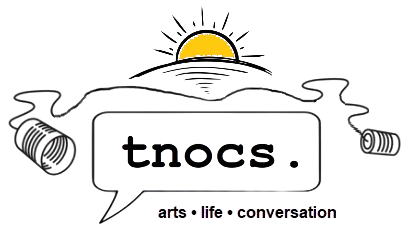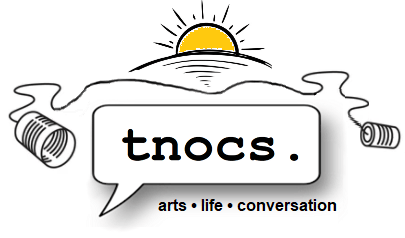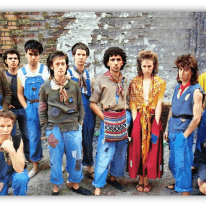As I write this:
It’s a gray, gloomy day
With distant thunder rumbling off to the north…

The first Goth song was “Bela Lugosi’s Dead” by Bauhaus.
It didn’t just happen, though. No one said, “Let there be Goth” and there was Goth. It had centuries of solemn, melancholy, music before it.

Johannes Ockeghem’s Requiem from about 1465 is not only one of the first uses of polyphony in religious music, it’s about meeting your maker.

In 1874, Camille Saint-Saëns wrote Danse Macabre, a symphonic poem that depicts Death playing a violin at midnight, leading skeletons in a dance until dawn.
Blues and Folk songs about the dark and dismal are common.
And Horror Rock — for lack of a better term — gave us Alice Cooper, Arthur Brown, and Bloodrock’s gruesome death fantasies. Though “I Put A Spell On You” by Screamin’ Jay Hawkins, “Jack The Ripper” by Screaming Lord Sutch, and much of The Cramps’ catalog are thought of as novelty songs, they show that menacing and morbid subjects can be treated cleverly and artistically.
We should also recognize the influence of the Romantic writers like Lord Byron, the Brownings, and the Shelleys.
Mary Shelley not only wrote Frankenstein, she reportedly kept Percy’s heart in a bag on her desk for the last thirty years of her life.

That’s pretty Goth..
And we can’t forget the original Goths:
Sometimes called the Visigoths, the Germanic people from the Balkans who sacked Rome in 410 AD. That was an important event in the weakening of the Roman Empire. The Goths populated southern France and the Iberian Peninsula.

And it’s probably their architecture — cathedrals with high ceilings designed to make one feel small — that relates most to this emotional but cold music of the 1980s.
The first group to be called “Gothic Rock” in print was The Doors.

Writing in The Williams Record in 1967, John Strickland wrote about meeting the band “in the gloomy vaulted wine cellar of the Delmonico hotel, the perfect room to honour the gothic rock of the Doors.”
Jim Morrison’s baritone voice and dark subject matter shows up in the Goth bands that arrived fifteen years later.
That deep, brooding voice wasn’t just for men.

Nico, the German model and actress, had a low voice that Village Voice reviewer Richard Goldstein described as “something like a cello getting up in the morning.”
She’s best known for singing on the Velvet Underground’s first album in 1967, though she really wasn’t a band member. The band wasn’t happy about having her on the record but their manager, artist Andy Warhol, insisted.

Nico sang lead on three songs, but “All Tomorrow’s Parties” is regularly mentioned as an early Goth influence.
Nico released a solo album called Chelsea Girl that same year, but she was unhappy with it. Producer Tom Wilson wouldn’t allow her to add drums, and then overdubbed strings and flutes without her knowledge.
She took control of her next album, The Marble Index.

Although it’s only half an hour long, it’s the deep, dark artistic statement she hoped for. Jim Morrison had encouraged her to write her own songs, which she did on a second-hand and slightly out-of-tune harmonium.
The album, like the Velvet Underground record, was ignored at the time but influenced many bands to come.
She also changed her look.

Tired of being considered nothing but a pretty face, she took to dying her blond hair black or bright red and wearing black clothes. The Goth look starts here.
That look was adopted by Susan Ballion, who’s better known by her stage name Siouxsie Sioux.

She dyed her hair jet black and used elaborate eyeliner and makeup. She also sang mostly in her lower register about what’s going on under the surface, whether it’s family struggles inside a “Happy House” or how the owners of a Chinese restaurant named “Hong Kong Garden” have to face racism every day.
Siouxsie & The Banshees were one of a number of Post-Punk bands in the early 80s. Post-Punk retained the rebellious and do-it-yourself ethos of Punk but experimented beyond the boundaries of Punk’s raw simplicity. Some wags suggest that it’s what happened when punks learned how to play their instruments.
Joy Division is another important proto-Goth influence.

Though they didn’t adopt the look, preferring to wear business casual, they made dance music with a Post-Punk edge.
While all that was going on, New Wave was popular in the mainstream.
New Wave’s synth-pop combining with Post-Punk’s angular guitar lines and dark topics is what brings us to Bauhaus.

The core members of Daniel Ash and David J had been in several unsuccessful bands together, and Ash finally talked Peter Murphy into starting a new group as the singer. Murphy wasn’t a singer or songwriter, but Ash thought he’d look good fronting a band.
They recorded “Bela Lugosi’s Dead” during their first studio session. It’s mostly the same three chords for nine minutes with lots of creepy echo and tape effects. Those sounds come directly from Dub, the Reggae subgenre pioneered by Lee “Scratch” Perry, King Tubby, and others.
They may have Jamaican roots, but you’d hear echoes like those in stone Gothic churches.
Murphy intones lyrics about Bela Lugosi’s funeral, complete with bats, dead flowers, and virginal brides.

And he says the word “undead” a whole bunch of times. We might attribute Murphy’s forceful but aloof vocals to him having a cold during the session, but it was also his first time singing in a studio. That’s always a little nerve racking but in this case, the result still influences Goth bands.
“Bela Lugosi’s Dead” wasn’t a major hit, but the people who liked it loved it. It’s somber and haunting, but also theatrical with dark humor.

Murphy took to dressing in black clothes with pale makeup and heavy eyeliner. Some of that comes from the Glam Rock of the early 70s but he was going for the vampire look.
His stage presence and the imagery Bauhaus used contributed to the visual culture of Goth, influencing fashion, art, and music videos in the genre.
It’s a fun song in the way that Blood Of Dracula’s Castle is a fun movie.

Both want you to be scared, laugh at yourself for being scared, and maybe laugh at the creators for thinking something so silly could be scary. Goth fans are in on the joke, if it’s a joke.
New bands joined this new Goth scene and existing bands made the switch.
Look at early pictures of The Cure and you won’t recognize the band that made forlorn songs like “Boys Don’t Cry” and “A Forest.”

Leader Robert Smith looked positively clean cut.
They had a literary bent, too, using books by Albert Camus and Penelope Farmer to inspire “Killing An Arab” and “Charlotte Sometimes.” Other bands cited Edgar Allan Poe and H.P. Lovecraft.
Later, The Cure went in a decidedly Pop direction.

Songs like “Lovesong,” “Just Like Heaven,” and “Friday I’m In Love” helped make them the most commercially successful Goth band. Even people who don’t know what Goth is like The Cure.
The Sisters of Mercy were one of the bands to set out to be Goth, though their real goal was hearing themselves on the radio.
With a constantly changing lineup, the only permanent member has been singer Andrew Eldritch. Even the drum machine called Doktor Avalanche was actually a series of technologically better equipment.

Their albums “First and Last and Always” and “Floodland” defined Goth Rock with deep vocals, driving basslines, and big choruses.
Most of these bands were British, but few were from London. The Cure were from Crawley, The Sisters Of Mercy from Leeds, and Bauhaus from Northampton.

However, a club in London’s Leicester Square called The Bat Cave was ground zero for up and coming Goth bands like The Skeletal Family, Specimen, and Xmal Deutschland.
As the Goth sound evolved, an array of subgenres developed.
An early offshoot, mostly from the USA’s west coast, was called Death Rock.

With bands like 45 Grave and Christian Death, it tackled topics like isolation and loss, but also kept a self-aware sense of humor like cheap horror movies do. These bands aren’t Goth per se, but they’re Goth-adjacent.
Dark Wave emphasized the New Wave aspect of Goth. Clan Of Xymox from The Netherlands sound as much like Duran Duran as they do Bauhaus. Dark Wave may be the most long lived of the Goth subgenres, with bands like Boy Harsher, Pixel Grip, and Twin Tribes forming in the 2010s and continuing to release new music.
Meanwhile in France, a subgenre called Cold Wave also highlighted Goth’s New Wave aspects but included the influence of Kraftwerk and other electronic bands.
It is characterized by its minimalist, melancholic sound created with synthesizers and drum machines. You can hear its detached, cold, but rocking aesthetic in bands like Marquis de Sade, KaS Product.

And Martin Dupont, who I assure you are a band, not a person.
Ethereal Wave, sometimes called just Ethereal, is characterized by its melodic, dreamy, and atmospheric sound. It uses traditional rock instruments like guitars and bass to create shimmering, cascading textures, as well as electronic instruments like synthesizers and drum machines to add layers of ambient sound.

The vocals are typically soft, breathy, and often layered with effects to enhance their ghostly quality. Female vocals are particularly prominent in Ethereal, although male vocals are also used, as heard in The Cocteau Twins, This Mortal Coil, and All About Eve.
There are other subgenres and sub-subgenres, but Goth’s influence is also felt in styles that are full genres on their sub-genres.
It’s hard to imagine Industrial or Electroclash without the Goth that came before them. Though it started in England, Goth spread globally, with significant movements in the United States, Germany, and other parts of Europe.

Festivals like Wave-Gotik-Treffen in Germany, the Blacksun in the US, and Whitby Goth Weekend in England are important annual gatherings for the Goth community.

There’s even a yearly Goth cruise.
Goth continues to influence fashion, visual arts, and other music genres, maintaining a distinct presence in the Alternative music scene.

From its early days in the UK to its global influence and diversification, the genre has evolved while retaining its core, dark aesthetic and emotional intensity.
Goth remains vibrant and influential. It’s still alive.
Or maybe, undead.
Suggested Listening – Full YouTube Playlist

Jack The Ripper
Screaming Lord Sutch
1964

Strange Days
The Doors
1967

Evening Of Light
Nico
1968

She’s Lost Control
Joy Division
1979

Bela Lugosi’s Dead
Bauhaus
1979

Happy House
Siouxsie Sioux & The Banshees
1980

A Forest
The Cure
1980

Garbage Man
The Cramps
1980

Wanda’s Loving Boy
Marquis de Sade
1981

https://youtu.be/TQ_MOB9PE94So Young But So Cold
KaS Product
1982

Evil
45 Grave
1983

A Day
Clan Of Xymox
1986

Lucretia My Reflection
The Sisters Of Mercy
1988

Heaven Or Las Vegas
The Cocteau Twins
1990

Is Everything Real?
The Frozen Autumn
2002

Pain
Boy Harsher
2018

Pursuit
Pixel Grip
2021
Let the author know that you liked their article with a “Green Thumb” Upvote!





Great write-up, Bill!
My ultra-reductive genre equation is:
The Doors + Ziggy Stardust + [insert punk band] = Goth
But such simplifications give Nico short shrift! So for balance, I will advocate for another goth queen.
It makes sense that most people credit “Bela Lugosi’s Dead” as the first goth single, because it’s so on-the-nose with its gothic horror theme.
But I really think the best pick for a one-band answer is Siouxsie and the Banshees. From their looks to their guitar sounds to their song topics, they were making gothic rock in every sense. Joy Division were influenced by them, and Bauhaus likely listened to both bands.
So my pick for First Goth Song is “Voices On the Air,” from 1978:
https://www.youtube.com/watch?v=YqP11z9P3o0
I also never really liked the “death rock” label. I mean, most genre labels have their issues, so it’s not special in that sense. And 45 Grave does seem more goth-adjacent than goth, closer to something like Horror Punk.
But Rozz Williams’ Christian Death is the gothiest goth to gothing goth! It’s always bothered me a bit that they get siloed into a death rock label for regional scene reasons, whereas Alien Sex Fiend (who were like The Cramps with synths) got the goth label, mostly because they were part of the Batcave scene in England.
Anyway, just have to weep ruby red tears of devotion to Christian Death’s Only Theater of Pain, my pick for the best Goth album of all time:
https://www.youtube.com/watch?v=59F9-unAq7Q
I see your point about “Voices On The Air” but I wish it was a better song. It loses steam and never tries to regain it. Maybe one of their other songs might be a better candidate but I went with the conventional wisdom about Bauhaus.
Christian Death, on the other hand, have always rocked.
“Voices” is somewhat static, but it was a B-side rather than a single, so I like it as a mood piece. Their first LP came out later that year, and there’s plenty of excellent gothic post-punk to be had.
https://www.youtube.com/watch?v=Xzx-cU8S0RM
I’ve probably shared this before, but anyone who wants to groove in the shadows can feel free to check out my grand goth playlist on Spotify:
https://open.spotify.com/playlist/5GgeNShLY5vODuhQd2nowf?si=dbec7b12af5e4e3e
It employs a loose definition of gothic as anything remotely spooky, and spans (arbitrarily) from 1966 – 1989.
Even the cicadas for once this spring are quiet.
We have the 17-year cicada plague here, and yes, when it rains, we get a brief break, but otherwise, so loud! And it’s not the normal cicada sound. It’s like they’re in a tunnel. It’s kind of terrifying.
As for today’s musical topic, I remember walking into my sister’s bedroom one day in the 80s and she proudly told me that the song she was listening to was “Bela Lugosi’s Dead”. She wasn’t a straight-on goth but she listened to a lot of punk, goth, industrial, new wave and other similar genres and turned me on to some of it. I particularly loved the song “The Lovecats” by the Cure and still do. Her and her best friend would go into the city to this amazing club called Medusa’s that had all-ages nights and would play a variety of punk, goth, industrial, what have you. Ministry was a Chicago band and played there frequently. It was a unique place for kids that didn’t feel like they fit in to “normal” society and I don’t think we’ll see the likes of it anytime soon, as these sort of scenes appear to be a thing of the past.
Lovecats is great. Here is the gothier yin to its yang:
https://www.youtube.com/watch?v=4v7WUz3GSgk
I think the cicadas are done here, which is too bad because they cancelled out my tinnitus.
They are definitely not done here. Can hear them right now outside my window, en masse.
I played for a kindergarten closing ceremony today and when each child was announced, the teacher read their favorite memory of the year. Cicadas were mentioned multiple times-
“when we learned that the cicadas don’t bite or sting”
“when we learned that a cicada can lay up to 500 eggs”
“when we learned that cicadas have 5 eyes”
“ I played for a kindergarten closing ceremony today…”
I have no doubt.
Don’t ever change. Good on you.
I’m too young for punk though I do remember the occasional vividly coloured spiked mohican still clinging on in the very early 80s. Goth was the first visible musical sect that I came across. It may have been overshadowed commercially by the new romantics but there was no one dressing up like Simon Le Bon or Tony Hadley and definitely not Boy George in my conservative backwater. Or going to the hairdresser and asking for a Flock of Seagulls.
There was always a handful of teenage goths in each year at school. Easily identifiable out of school, dressed in black and showing as little skin as possible and with a heavy long overcoat regardless of the weather. The clothes generally sourced from a 2nd hand shop. Impervious to any other trend and to whatever anyone else thought of them and their music.
All the British bands are very familiar as the UK chart being entirely sales based along with the deep tribalism meant that Goth was a regular top 40 presence. The American side is entirely new to me so good to understand how it progressed.
One more name I’d put forward as an important figure is Nick Cave. He’s evolved over time and he was never pure goth as there were other elements mixed in to the music but goth was definitely in there and he had the look and the dark lyrical content.
RELEASE THE BATS!!!!
Thanks, Bill. This isn’t my favorite genre, but now I’ve got a better understanding of the urge to over-eyeline and wax horrific.
Add “Wax Horrific” to the list of band names.
Done!
I crushed hard on most of the Goth girls I met in High School (1986 – 88), but didn’t really take the plunge myself. One of the girls I crushed on tried to pierce my ear with a safety pin while we were in History class. I was OK with that, as I got to go to her house after school that day & listen to Siouxie & The Cure with her.
This is my favorite Goth video:
https://youtu.be/G9A8PFlqM4U
Made with fresh Goths.